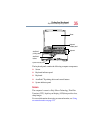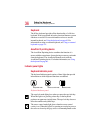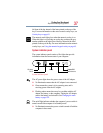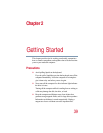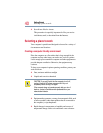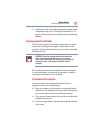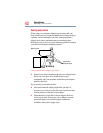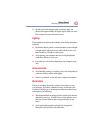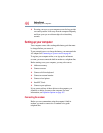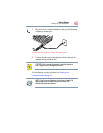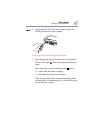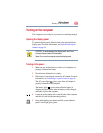
43
Getting Started
Selecting a place to work
❖ Sit with your back straight so that your knees, hips, and
elbows form approximately 90-degree angles when you work.
Don’t slump forward or lean back too far.
Lighting
Proper lighting can improve the visibility of the display and reduce
eyestrain.
❖ Position the display panel or external monitor so that sunlight
or bright indoor lighting does not reflect off the screen. Use
tinted windows or shades to reduce glare.
❖ Avoid placing your computer in front of a bright light that
could shine directly in your eyes.
❖ If possible, use soft, indirect lighting in your computer work
area.
Arms and wrists
❖ Avoid bending, arching, or twisting your wrists. Keep them in
a relaxed, neutral position while typing.
❖ Exercise your hands, wrists and arms to improve circulation.
Work habits
The key to avoiding discomfort or injury from strain is to vary
your activities. If possible, schedule a variety of tasks into your
work day. Finding ways to break up the routine can reduce stress
and improve your efficiency.
❖ Take frequent breaks to change position, stretch your muscles,
and relieve your eyes. A break of two or three minutes every
half hour is more effective than a long break after several
hours.
❖ Avoid performing repetitive activities for long periods.
Intersperse such activities with other tasks.



